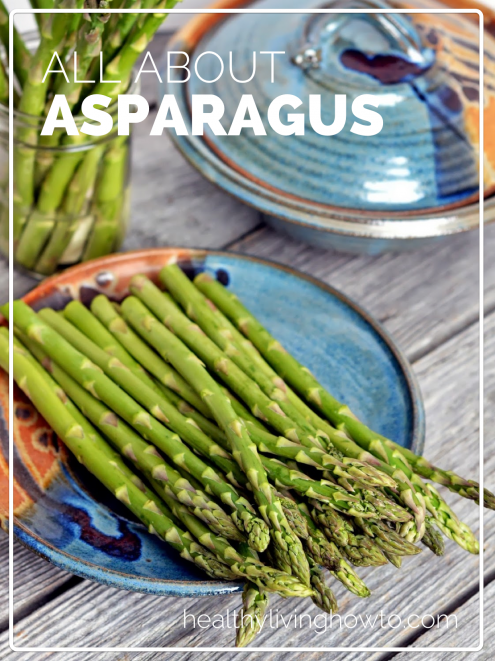Asparagus stalks rise from the earth ready for picking come spring time. Depending on where you live, local asparagus is ready in the South as early as February and in the North in May or even June. Classic asparagus are steamed but it doesn't really matter how you cook them; it comes down to personal preference. More importantly, to retain the nutrients in asparagus, it should be slightly crisp and not soggy or overcooked. Eating asparagus with a knife and fork may seem proper, but according to Mark Bittman, author of How to Cook Everything, “using your fingers is considered polite, even among sticklers.”
All About Asparagus
♥ Asparagus is an excellent source of folate, a water-soluble vitamin which helps the body form red blood cells. It is essential for proper cell division and formation of genetic material within every body cell. Folate is also necessary for a healthy cardiovascular system.
♥ Asparagus is high in fat-soluble K. Vitamin K is essential for healthy clotting as well as strong dense bones. Dietary fat is crucial to the absorption of the fat-soluble vitamins, so don't be afraid to eat your asparagus slathered with ghee or baked in bacon grease (my favorite).
♥ Asparagus provides phytonutrients, such as beta-carotene, lutein and zeaxanthin, which are antioxidants that protect cells against the oxidative damage caused by free radicals.
♥ Asparagus is high in glutathione, which according to Dr. Mark Hyman, is the, “mother of all antioxidants, a master detoxifier and maestro of the immune system.” Source
♥ Asparagus contains inulin, a fiber which feeds the friendly bacteria found in our gut.
♥ According to the Environmental Working Group's Guide to Pesticides in Produce, asparagus is on the “Clean 15” list, meaning it was found to be lowest in pesticide residue.
♥ There are over 300 varieties of Asparagus, 20 of which are edible and are classified by color, green, white or purple.
♥ Medium-size asparagus, about 1/2-inch in diameter, is the best. Very thin spears are easily overcooked and very thick spears are woody, tough and stringy.
♥ To prepare asparagus simply snap off the bottom of each stalk. They will separate right where they are supposed to.
♥ Steaming is the basic cooking method for preparing asparagus, however, personal preference reigns supreme (see my easy oven-baked method below).
♥ Asparagus are done when you can easily insert a thin-blade knife or fork into the thickest part of the stalk.
♥ A dozen medium spears of asparagus have 50 calories, 0 g fat, 7 g carbs, 4 g fiber and 4 g protein.
I asked my friends on the Healthy Living How To Facebook page for their favorite ways to prepare and enjoy asparagus. Lots of great responses…check them out by clicking HERE.
Ingredients
- Asparagus Spears
- Bacon Grease, Coconut Oil or Ghee (melted)
- Celtic Sea Salt
Directions
- Preheat oven to 425 degrees F.
- Line baking sheet with Silpat or unbleached parchment paper.
- Prepare asparagus by snapping off the ends or trimming with a knife.
- Place asparagus on baking sheet and brush both sides with bacon grease then sprinkle with salt.
- Bake for 7-10 minutes.

